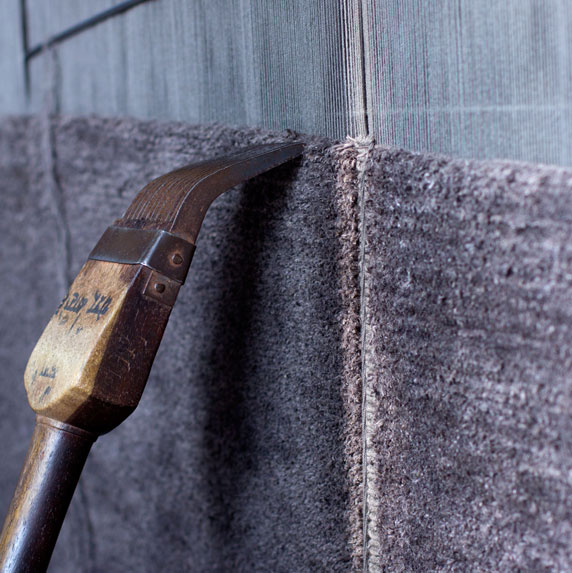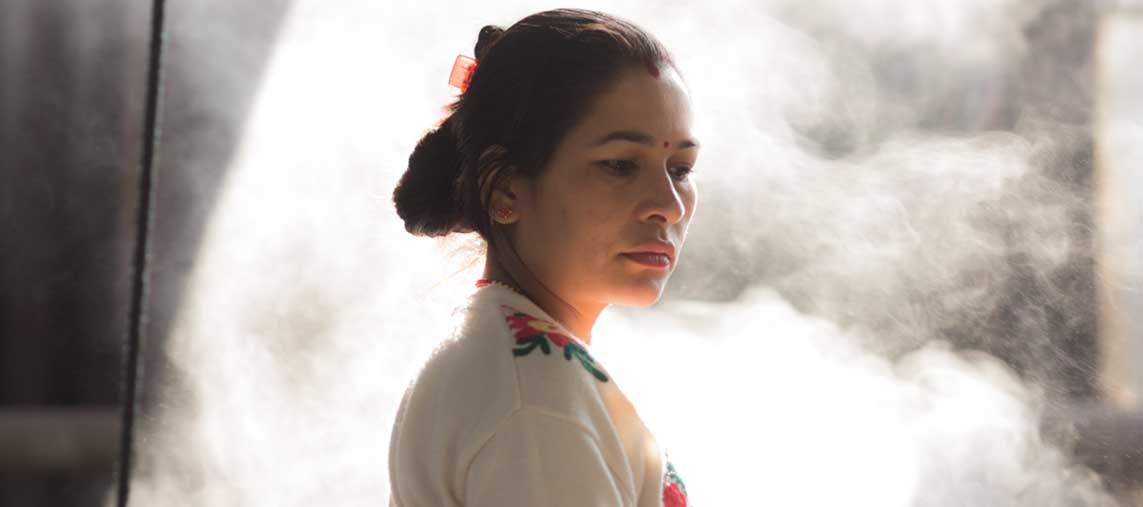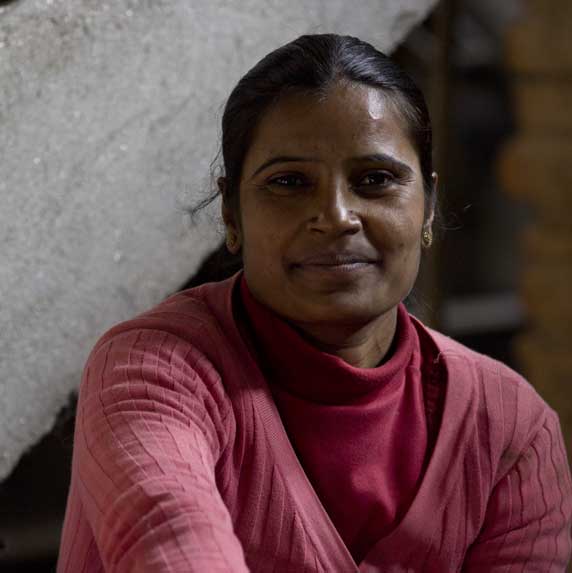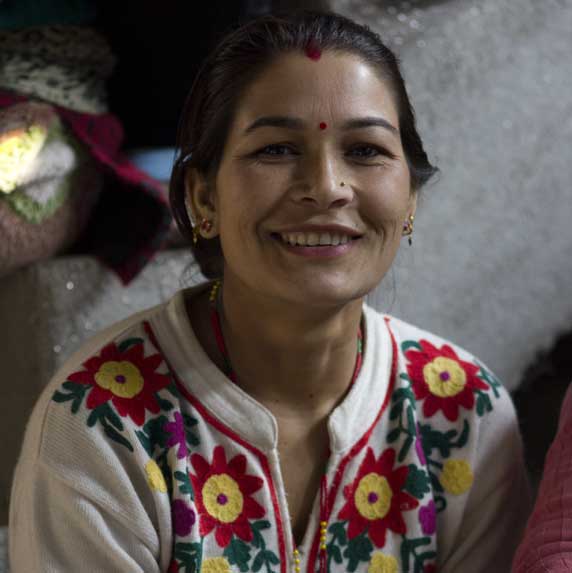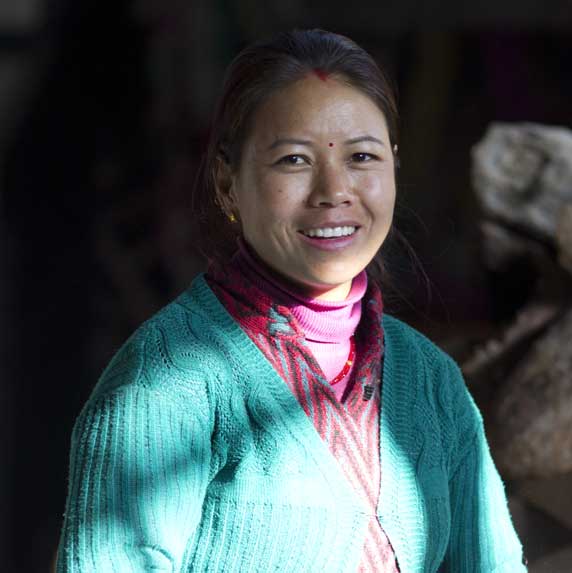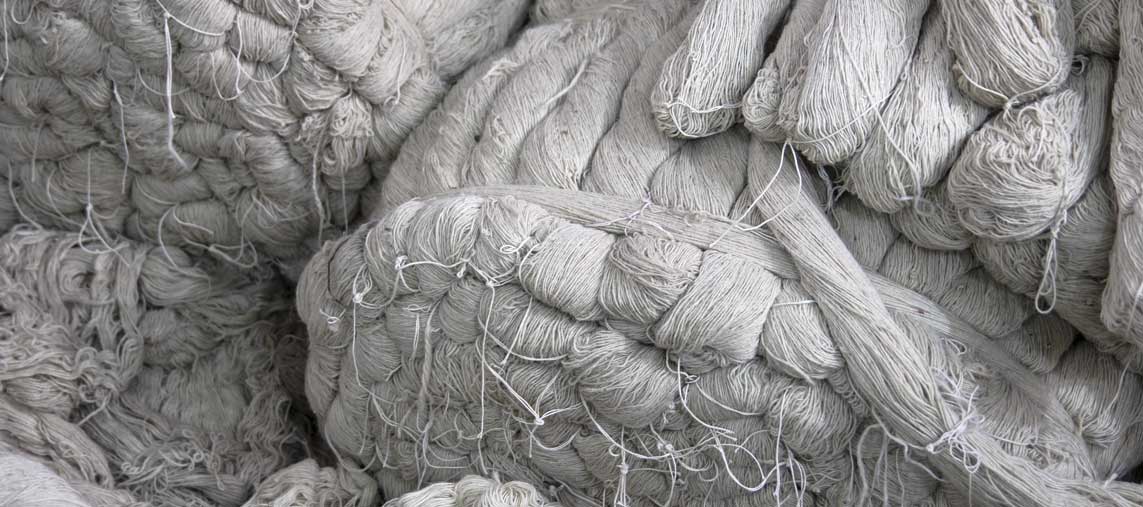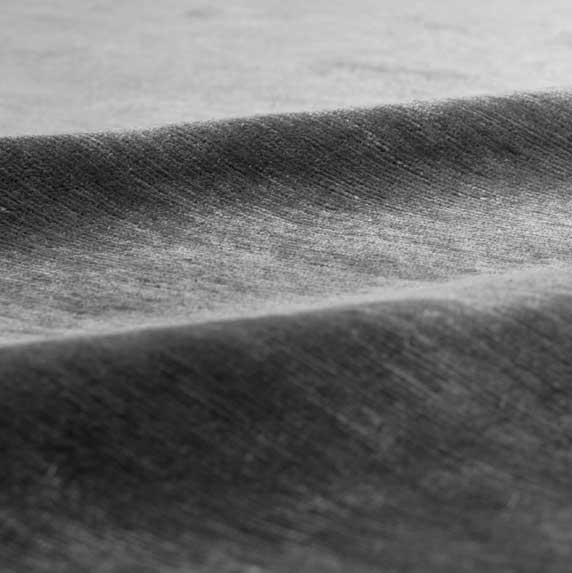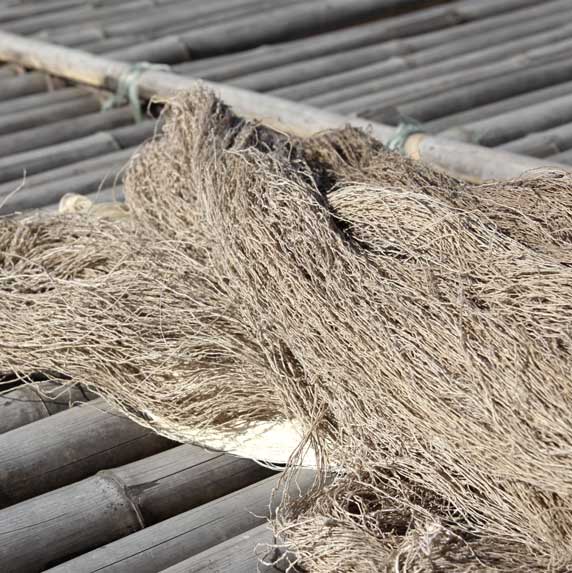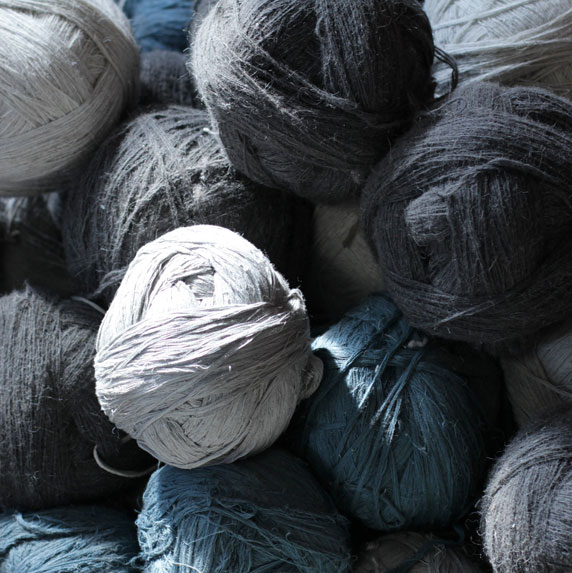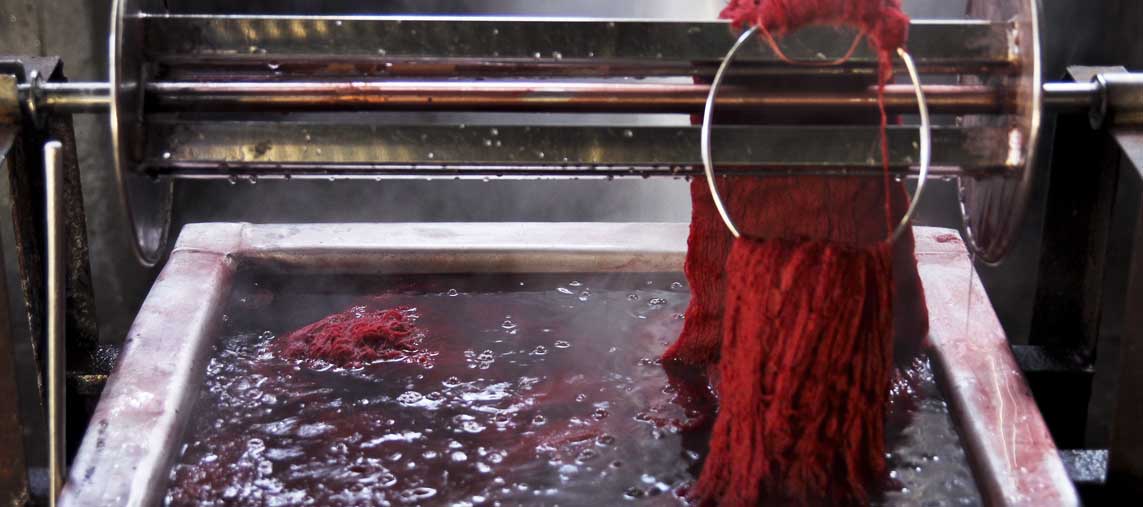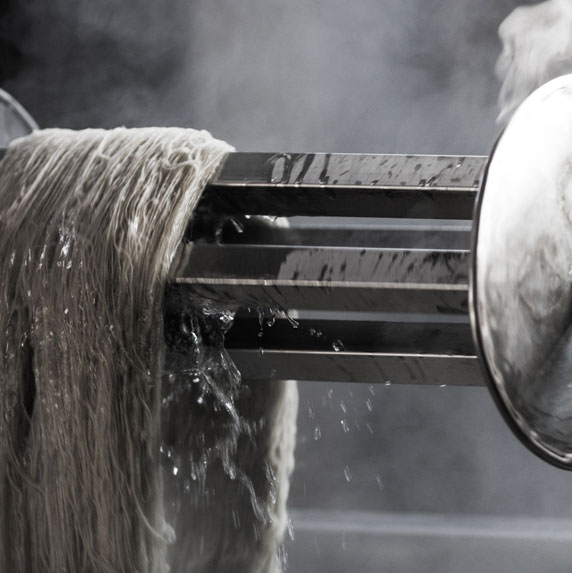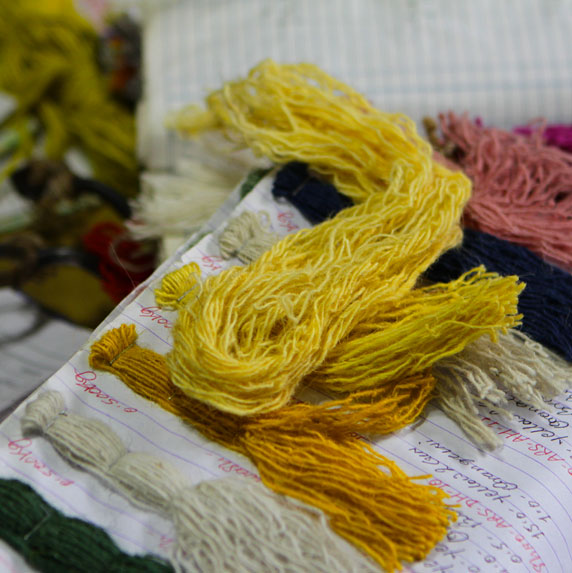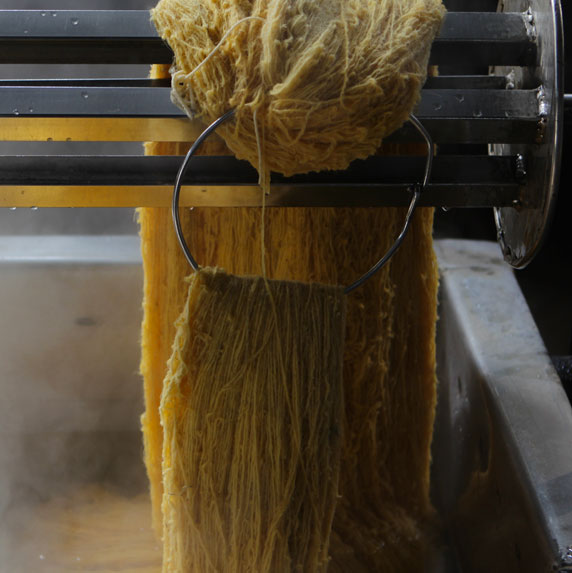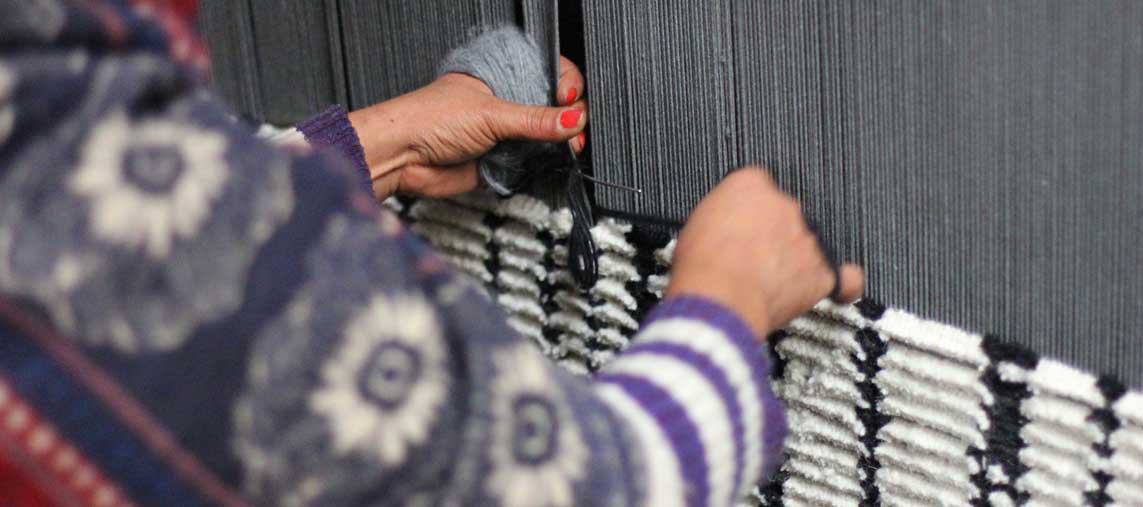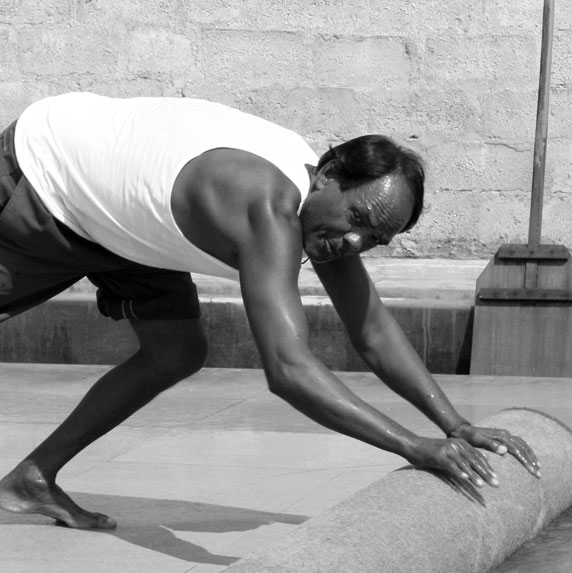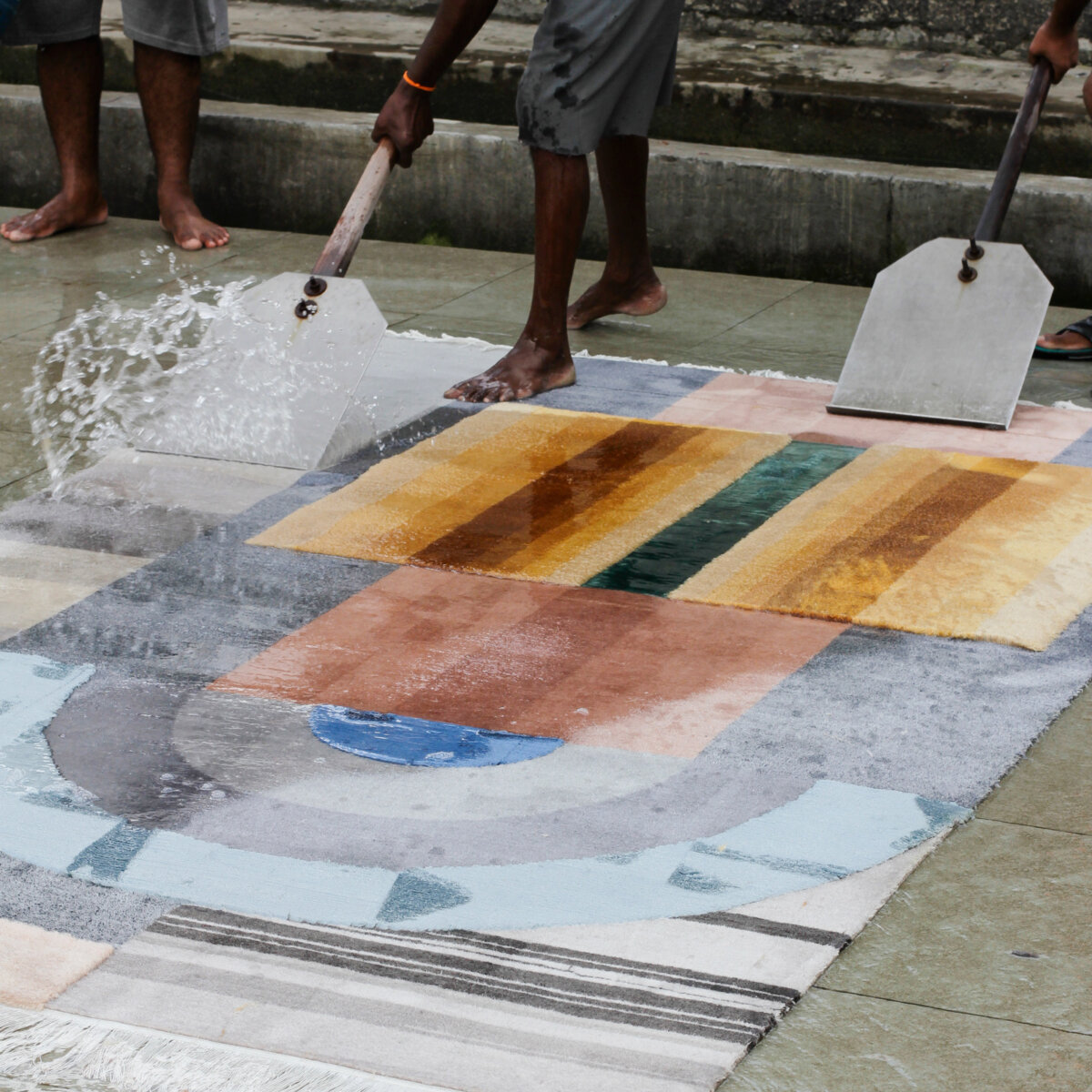production
cc-tapis produces hand-knotted rugs which are made in Nepal by Tibetan artisans. Hand-knotting is an extremely fine and complex production technique where every knot in the rug is made my hand. A cc-tapis rug can have up to 232,000 individual knots per square meter.
We are proud to say that no machines are ever used in our process and we still produce rugs the way that have been produced for centuries.
All cc-tapis rugs are produced in the cc-tapis Atelier outside of Kathmandu in the Boudha region of Nepal. Our rugs are made with a Tibetan knot.
Every stage of production is managed at our Atelier, from the refining of the raw materials, to the dying, hand-knotting, finishings and the final washing. This gives us total control and the freedom to create unique bespoke pieces.
We only use the finest natural materials
The wool we use is Himalayan wool which is sourced in Tibet from Himalayan sheep. It is a rich and robust wool with it’s strength coming from the amount of natural lanolin present in each fibre, making it durable and naturally stain resistant.
The silk we use is imported from China and comes directly from the silk worm.
Aloe is a strong fibre we recommend for high-traffic areas. It is extremely strong with a profound texture and is made from the fibre of a nettle plant.
All materials are processed and hand-spun in our own Atelier, meaning we can customize and adapt the yarns to perfectly suit the project. Giving the choice between extremely fine yarn or a thick and textured one.
Once the materials have been hand-spun, they are washed and then dyed by hand by our “master of color”. The “master of color” is as the name suggests a master of his trade and can match Pantone or RAL color codes. Materials are dyed per project and very little stock is kept of each color. As everything is dyed by hand you can choose between full or abrash tones.
Once the materials have been washed and dyed, the hand-knotting begins. A warp, made of hundreds of strands of cotton is stretched onto a vertical loom. The terminal ends of the warp will eventually form the fringes of the future rug. The transversal threads are the weft and they insure firmness to the artefact.
The wool, silk and aloe threads are then knotted onto the cotton warp and the design is created. The knots form the pile of the rug which can be short, long or shaggy.
When the knotting is complete, the rug undergoes vigorous finishing phases which include hand-cutting, shearing and embossing to define the design. After which the rugs are washed in recycled rainwater, stretched and laid in the Himalayan sun to dry.
Washing of the rugs is essential as it fixes the dyes and it also allows for the opportunity to remove any loose fibres. By washing them in recycled water it is a wonderful and sustainable way to save water but we can also guarentee that there are no chlorines in the water which could potentially bleach the rug,
